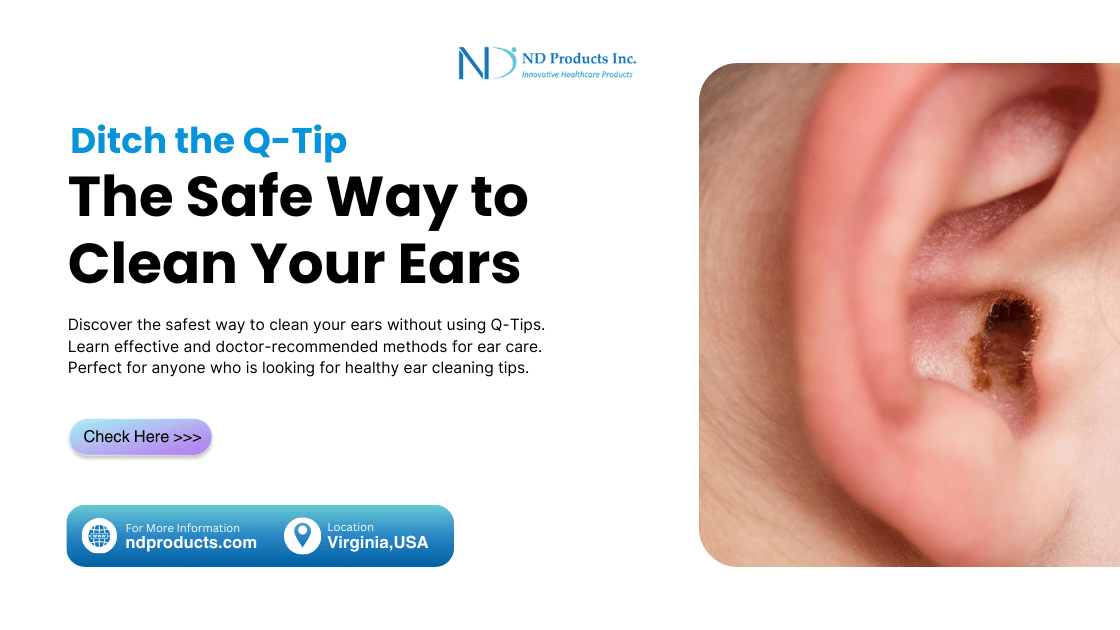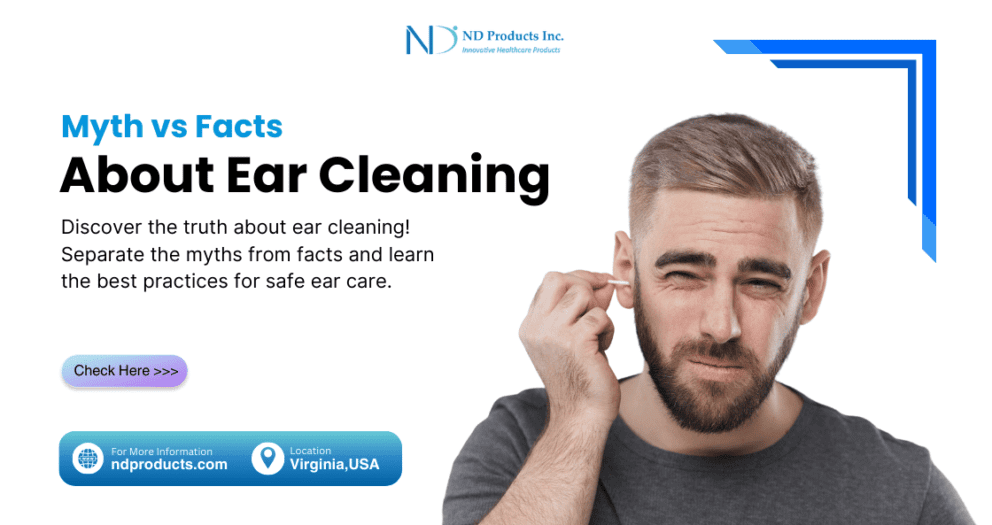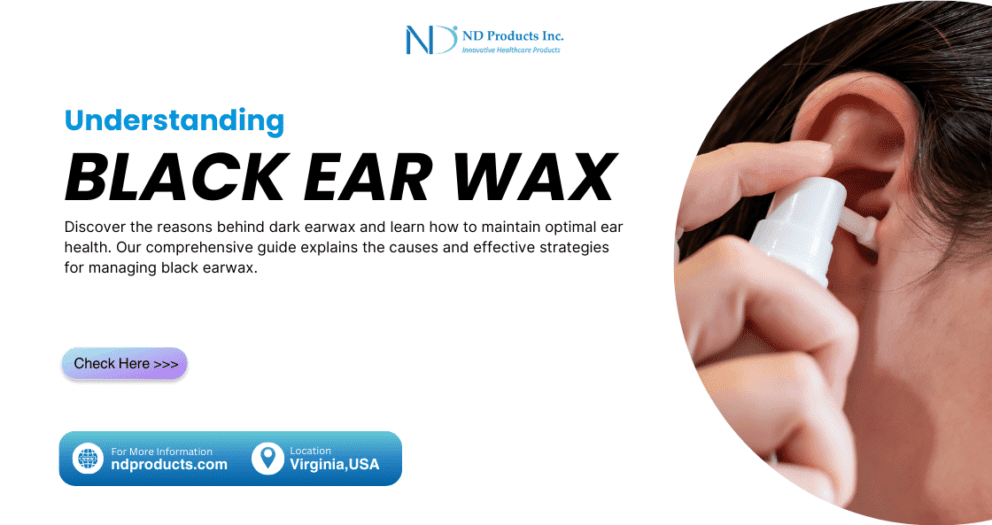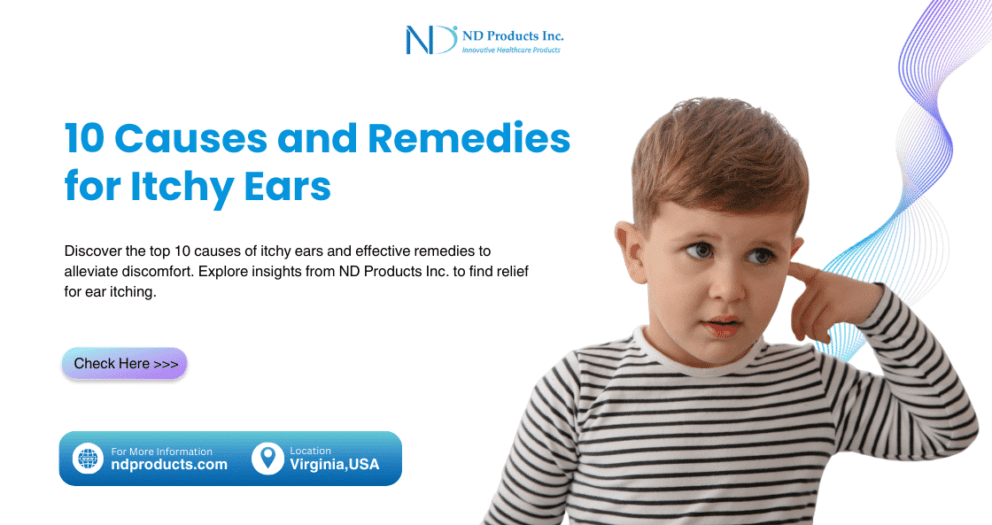If you find watching earwax removal videos strangely satisfying, Just like the draw to these videos, you might feel tempted to use a Q-Tip to clean your ears. But resist the urge!
While the final reveal might be satisfying, earwax isn’t usually bad for you. It helps keep your ears clean and healthy. Using cotton swabs to remove earwax can actually do more harm than good. That is why it says “Do not put into ear canal” on their box”.
Read on to learn about the importance of earwax and discover safe ways to keep your ears clean without the hazards of using a cotton swab.
Earwax Protects Your Ears
Having modest earwax doesn’t mean your ears are dirty. Just like nose hairs and eyelashes, earwax serves a protective purpose for your ear canal.
“Earwax (or cerumen) is naturally made by special glands in the outer ear canal skin,” according to ENT specialists. “It forms a protective layer around your ear canal.”
Earwax prevents unwanted particles such as dust and insects from entering the ear canal and inhibits the growth of dangerous germs and fungi. It also moisturizes the ear canal, which prevents dryness and itching.
Your Ears Are Self-Cleaning
“Your ears have their own self-cleaning system that helps push earwax from the deeper parts of the ear canal toward the ear’s opening,” says Dr. Stewart.
This process works thanks to your jaw muscles. When you chew or talk, the movement helps the wax travel along the ear canal to the opening, where it can dry up, flake off, or fall out. Cleaning is only necessary if there’s an excessive buildup of earwax.
The Risks of Messing with Earwax
The problems start when you try to manage earwax on your own.
Despite clear warnings on cotton swab boxes, many people still use cotton swabs to clean their ears. ENT experts say patients who use pencils, pen caps, hair pins, and paperclips in attempts to clean their ears make the condition worse.
However, most of the ear pick tools can create bigger problems than earwax. Instead of helping, inserting objects into the ear can push earwax deeper into the ear canal or even cause injury deep inside your ear.
If you push wax too close to the eardrum, it can block natural clearing and lead to earwax buildup or impaction, “Impacted earwax is a major cause of hearing loss”.
Inserting an object too far into the ear canal can also harm the eardrum and three small bones in the middle ear that aid in hearing.
The eardrum is delicate and can easily rupture, even with a soft cotton swab. A ruptured eardrum can cause severe ear pain and may result in hearing loss.
Watch Out for Over-the-Counter (OTC) Earwax Removal Devices
Some tools for cleaning ears, such as ear candling, may be popular on social media, but most of these products are not recommended.
Ear candling or ear coning involves placing a lit candle near the ear. The idea is that the heat from the candle will draw out earwax. However, this method does not work. It can be dangerous and is not supported by medical professionals.
How to Safely Clean Your Ears
Instead of using cotton swabs, there are safe methods to clean your ears:
- Let Your Ears Clean Themselves: in some cases, washing your hair is sufficient to remove wax near the outer ear. Water that enters the ear canal helps loosen the wax. Afterward, use a dry tissue or cloth on your finger to gently dab the outer ear. Do not enter rolled napkin into the ear canal.
- Use Softening Drops: Over-the-counter ear drops can help soften earwax. Tilt your head to the side and place a few drops in your ear. Next, gently flush your ear with lukewarm water. If you experience pain or dizziness, stop immediately and consult your healthcare provider.
- Ear-o-Care Tool: ND Products Inc Ear wax removal kit Made out of medical grade silicon with soft scoop tip and safety stopper at the base, making it a safer and more comfortable ear cleaner for the entire family, and without the hazards seen with other methods.
Note: You may not attempt to clean your ears if you have:
- Holes in your eardrums
- Ear tubes
- Recently had ear surgery
- A history of recurrent ear infections
What to Do if You Have Earwax Buildup or Pain
It’s critical to recognize the signs of earwax buildup, which can happen spontaneously or as a result of poor ear cleaning. If you experience ear pain or pressure, hearing difficulties, ringing or buzzing sounds in your ear, dizziness, or itching in the ear canal, contact your healthcare provider.
Your provider can examine your ear using an otoscope to identify the issue and decide on the next steps. If excessive earwax is the problem, they may perform ear lavage, where warm water is gently flushed into the ear canal to remove the wax. They may also use a curette to grab and extract the buildup.
Conclusion
Earwax may seem a bit unpleasant, but a minimal amount of it plays a crucial role in protecting and maintaining your ear health.
Although you might feel tempted to clean your ears with cotton swabs, it’s better to allow your ears to manage earwax naturally. Avoid hazardous methods that could potentially harm your ears.






Write a comment
Your email address will not be published. All fields are required